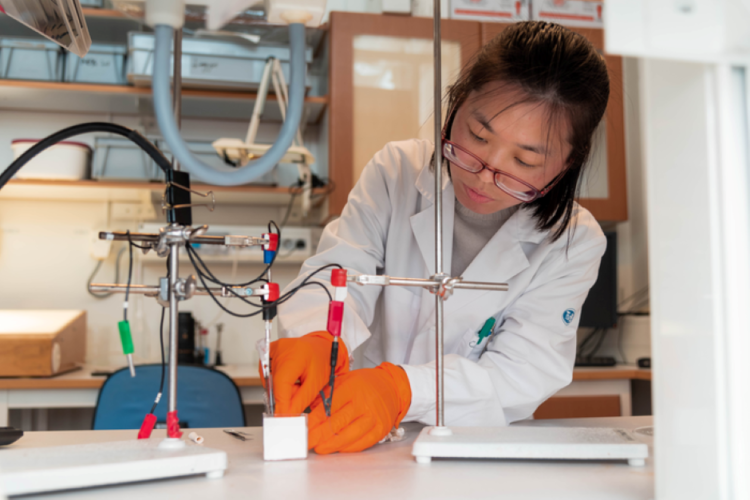
Inspired by bone growth and development, the materials mimic fontanelles present in the skulls of new born children. This connective tissue allows the baby to pass through the birth canal, but then hardens into bone to provide more protection to the growing child.
To recreate this duality, the researchers from the universities of Linköping in Sweden and Okayama in Japan began with a gel material called alginate. An electroactive polymer material was grown on one side of the gel that changes its volume when a low voltage is applied, causing the microrobot to bend in a specified direction.
On the other side of the gel, the researchers attached biomolecules that allow the soft gel material to harden. These biomolecules are extracted from the cell membrane of a kind of cell that is central to bone development. When the material is immersed in a cell culture medium that resembles the body’s internal environment, the biomolecules make the gel mineralise and harden like bone. According to the researchers, the discovery could be used to treat complex fractures, with microbots made from the material injected into specific locations in the body to form or encourage new bone growth.
“We want to use this for applications where materials need to have different properties at different points in time,” said Edwin Jager, associate professor at the Department of Physics, Chemistry and Biology (IFM) at Linköping University.
“Firstly, the material is soft and flexible, and it is then locked into place when it hardens. This material could be used in, for example, complicated bone fractures. It could also be used in microrobots – these soft microrobots could be injected into the body through a thin syringe, and then they would unfold and develop their own rigid bones.”
By making patterns in the gel, the researchers were also able to demonstrate how the simple microrobot can be controlled when voltage is applied. Perpendicular lines on the surface of the material make the robot bend in a semicircle, while diagonal lines make it bend like a corkscrew.
“By controlling how the material turns, we can make the microrobot move in different ways, and also affect how the material unfurls in broken bones,” Jager continued.
“We can embed these movements into the material’s structure, making complex programmes for steering these robots unnecessary.”




Swiss geoengineering start-up targets methane removal
No mention whatsoever about the effect of increased methane levels/iron chloride in the ocean on the pH and chemical properties of the ocean - are we...